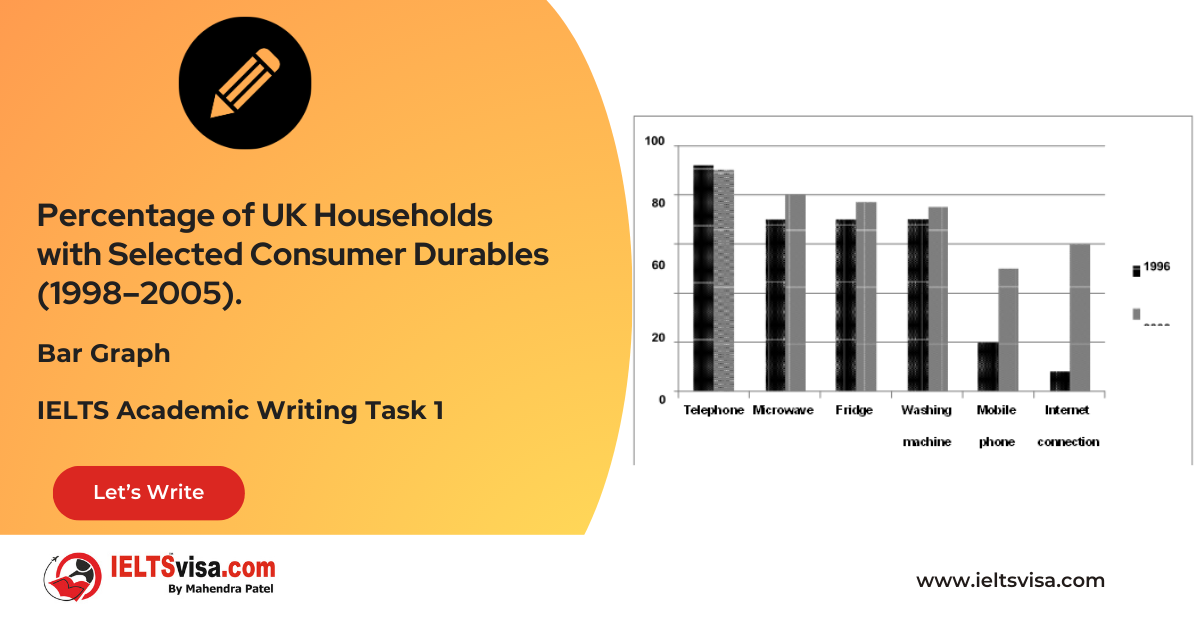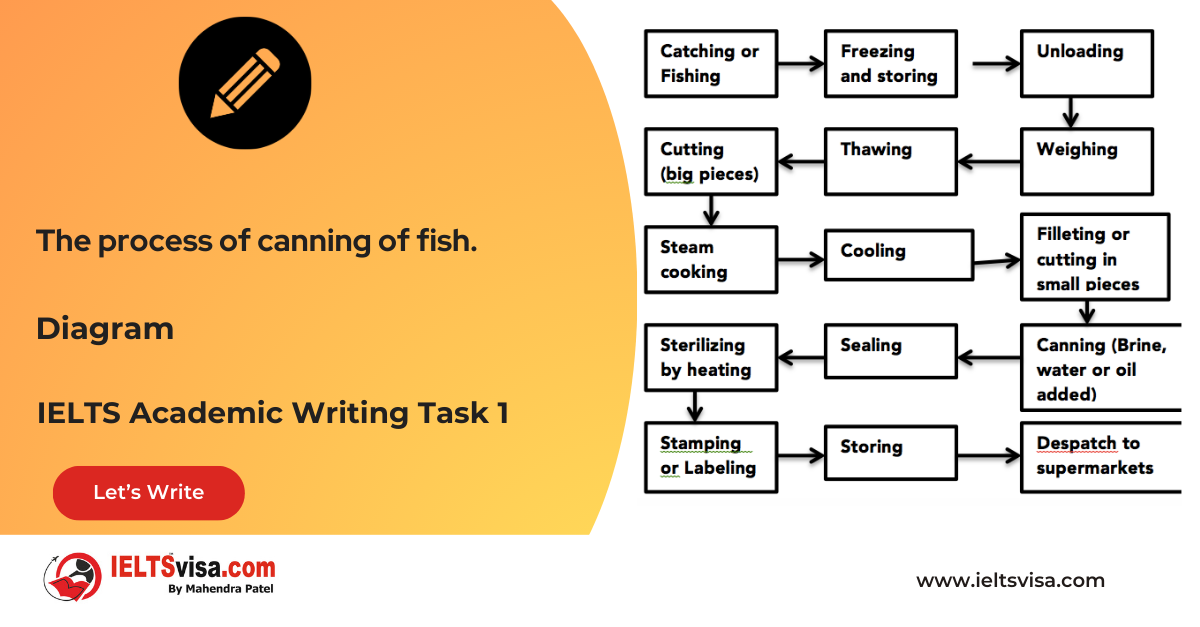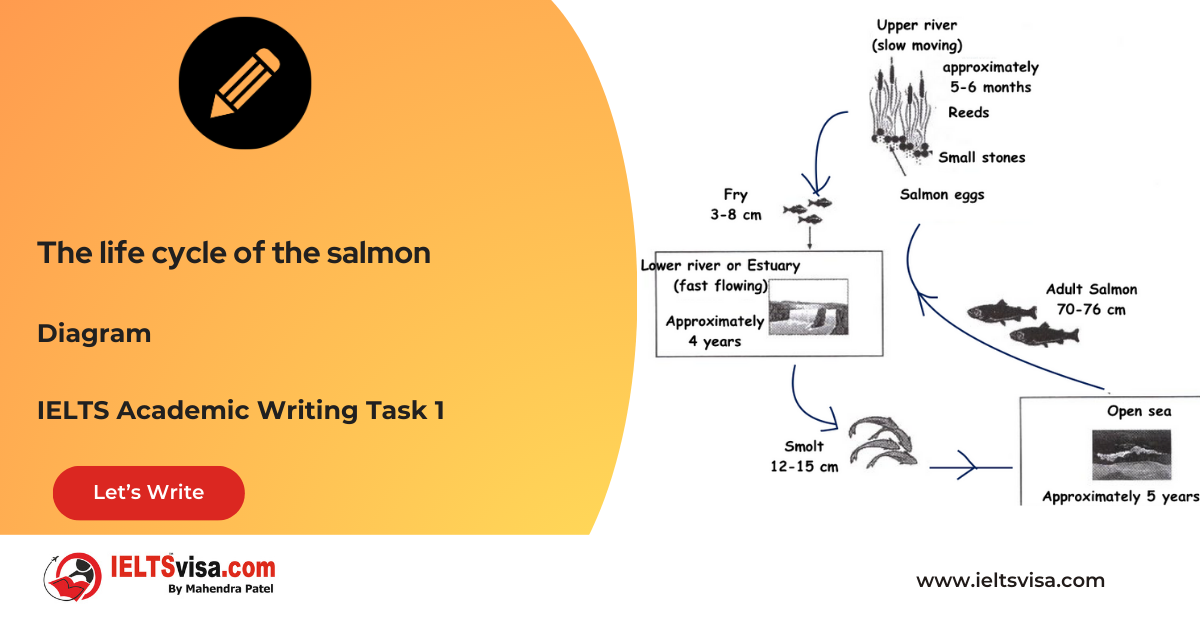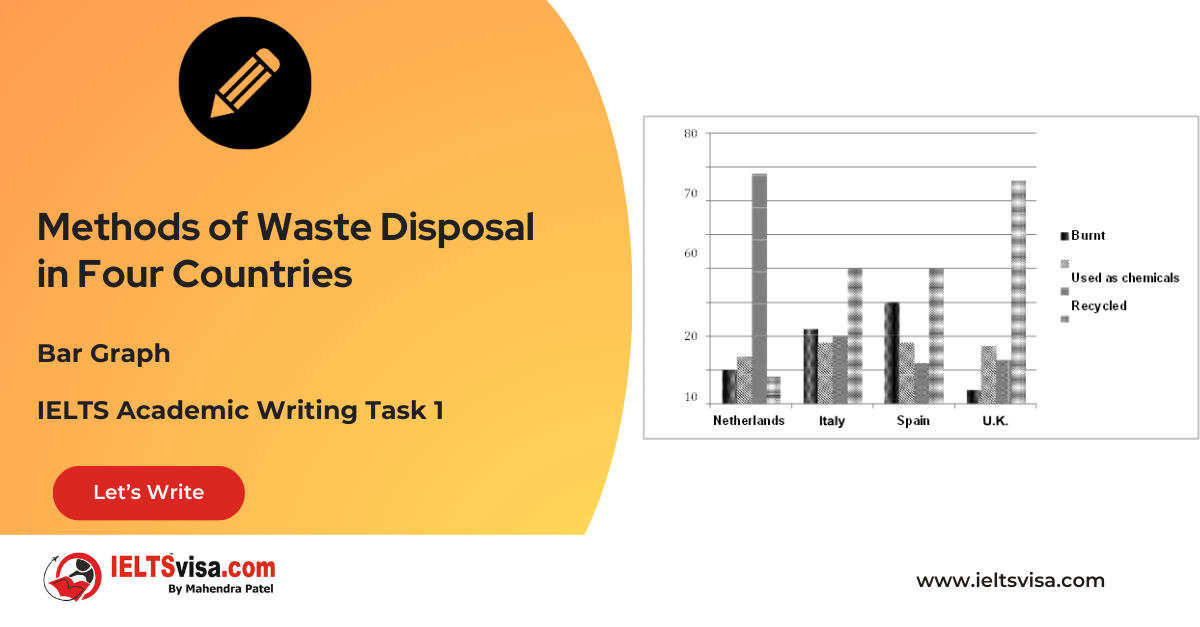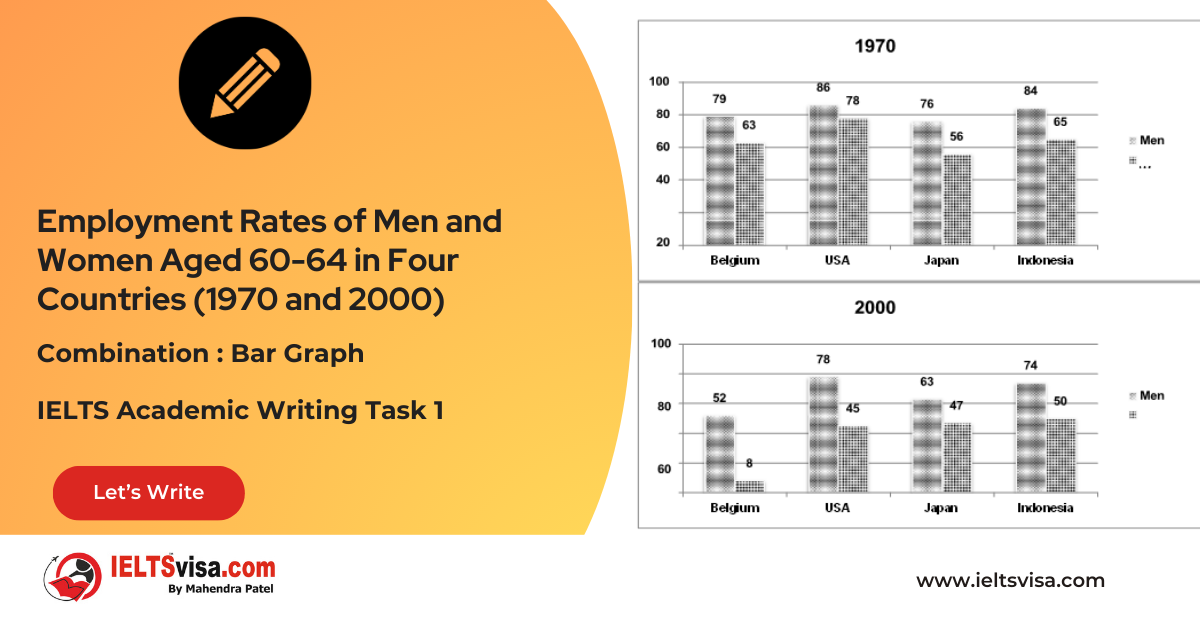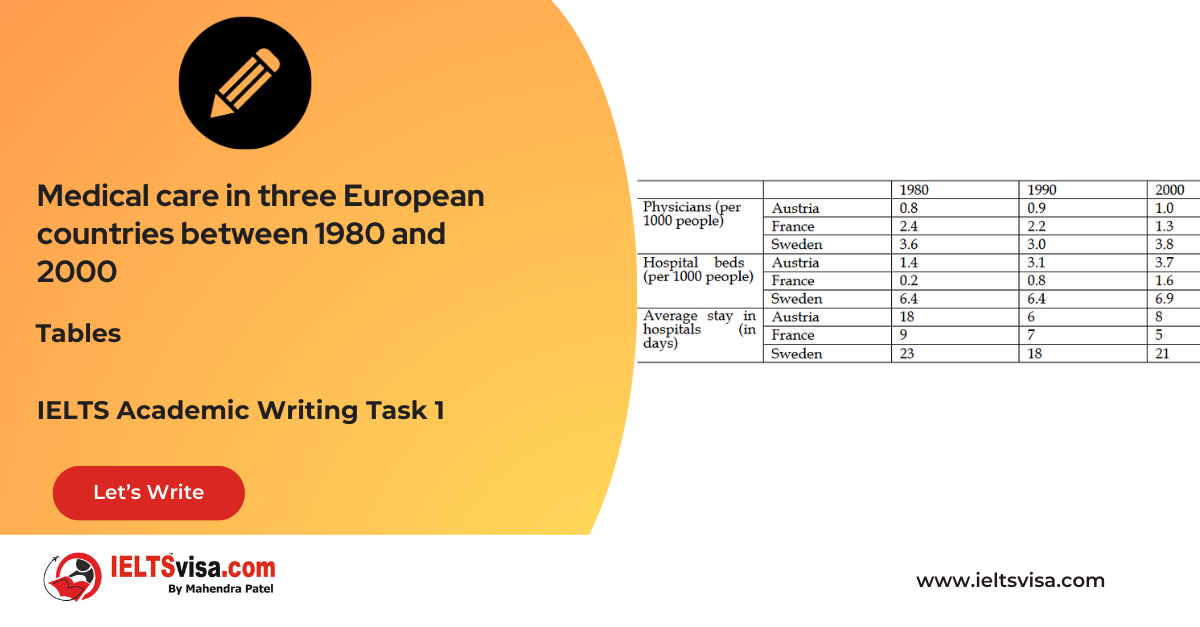The plan of a library in 2001 and 2009
IELTS Academic Writing Task 1 - Diagram
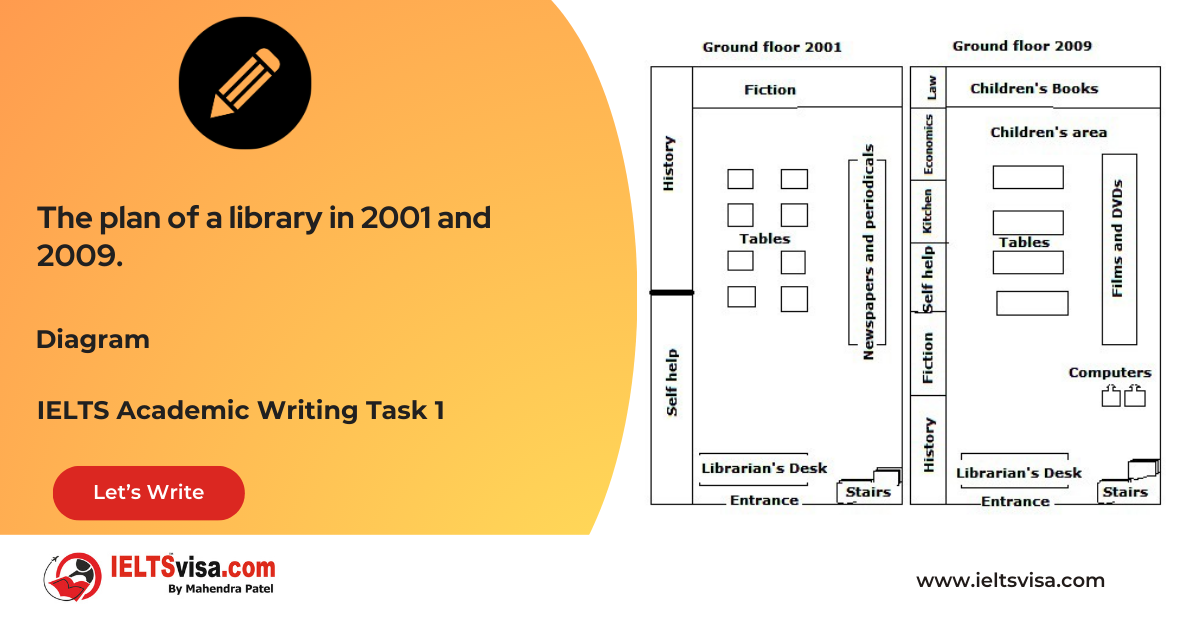
IELTS Writing Task 1 Question
The diagram below shows the plan of a library in 2001 and 2009. Summarise the information by selecting and reporting the main features and make comparisons where relevant.

Common questions for the diagram
1. Graph Type: Floor Plan Diagram
2. Title: Library Plan in 2001 and 2009
3. What are the units of measurement?: Not applicable (map showing layout changes)
4. Who: Library layout and sections
5. When: 2001 and 2009
6. Where: Ground floor of the library
7. Topic: Changes to the ground floor layout of the library over eight years
Comparison Showing and Trends
Comparison 1 : Layout in 2001
- Details:
1. Self-help and history sections occupied the entire left wall.
2. Fiction section was on the back wall.
3. Newspapers and periodicals were on the right wall.
4. Eight smaller tables were present in the middle.
Comparison 2 : Layout changes by 2009
- Details:
1. The left wall was reorganized to include fiction, kitchen, economics, and law sections.
2. The children’s books section replaced the fiction section on the back wall, adding a new children’s area.
3. Films and DVDs replaced newspapers and periodicals on the right wall, with computers placed in front of them.
4. Eight smaller tables were replaced by four larger tables.
Sample Answer
The given diagrams illustrate the layout changes made to the ground floor of a library between 2001 and 2009.
In 2001, the library had the self-help and history sections occupying the entire left wall, while the fiction section was located on the back wall. Newspapers and periodicals were on the right wall, and the central space was filled with eight smaller tables. The children’s books section and children’s area were absent.
By 2009, significant changes were implemented. The left wall was reorganized to include new sections: fiction, kitchen, economics, and law. The back wall was repurposed for children’s books, and a children’s area was created directly in front. The right wall, which originally housed newspapers and periodicals, was replaced by a section for films and DVDs, with computers placed opposite. Additionally, the eight smaller tables in the centre were removed, making way for four larger tables.
The entrance, librarian’s desk, and stairs remained unchanged throughout this period. The desk continued to be located just after the entrance, and the stairs stayed in the front right corner.
Overall, the ground floor of the library saw significant additions and reorganizations over the eight-year period, improving functionality and space allocation.
Top 5 Vocabulary
| Vocabulary | Meaning | Synonyms | Examples | Type |
|
Reorganize |
To arrange differently |
Rearrange, restructure |
“The library layout was reorganized to include new sections.” |
Verb |
|
Repurpose |
To use something for a different purpose |
Redesign, reassign |
“The back wall was repurposed for children’s books.” |
Verb |
|
Implement |
To put into effect |
Execute, apply |
“Significant changes were implemented by 2009.” |
Verb |
|
Allocation |
The distribution of resources |
Assignment, distribution |
“The changes improved space allocation.” |
Noun |
|
Functionality |
The quality of being suited to serve a purpose |
Usability, practicality |
“The new layout enhanced the library’s functionality.” |
Noun |
|
Illustrate |
To describe or explain something clearly with details |
Depict, demonstrate |
“The diagrams illustrate the layout changes in the library.” |
Verb |
|
Layout |
The arrangement of items in a space |
Plan, design |
“The library’s layout changed significantly by 2009.” |
Noun |
|
Modify |
To change or alter slightly |
Adjust, amend |
“The library modified its book sections.” |
Verb |
|
Expand |
To increase in size or extent |
Enlarge, extend |
“The library expanded its fiction section.” |
Verb |
|
Adjust |
To make small changes to improve something |
Modify, fine-tune |
“The tables were adjusted to improve space usage.” |
Verb |
|
Convert |
To change something into a different form |
Transform, adapt |
“The back wall was converted into a children’s section.” |
Verb |
|
Enhance |
To improve the quality or function of something |
Boost, upgrade |
“The new layout enhanced the library’s usability.” |
Verb |
|
Restructure |
To organize something in a different way |
Reorganize, revamp |
“The library was restructured to include more sections.” |
Verb |
|
Optimize |
To make the best use of something |
Improve, maximize |
“The new layout optimized space usage.” |
Verb |
|
Accommodate |
To provide space for something |
Adjust, fit |
“The new tables accommodated more readers.” |
Verb |
|
Refurbish |
To renovate or redecorate something |
Renovate, restore |
“The library was refurbished with modern furniture.” |
Verb |
|
Upgrade |
To improve by making changes or adding something new |
Improve, enhance |
“The library upgraded its facilities by adding computers.” |
Verb |
|
Expand |
To increase in size or number |
Extend, grow |
“The fiction section expanded to include new genres.” |
Verb |
|
Adapt |
To adjust to new conditions |
Modify, alter |
“The layout was adapted to include modern resources.” |
Verb |
|
Allocate |
To distribute or assign resources |
Assign, distribute |
“New sections were allocated space on the left wall.” |
Verb |
|
Position |
To place something in a particular location |
Arrange, situate |
“The computers were positioned opposite the film section.” |
Verb |
|
Section |
A specific area or part of something |
Division, category |
“A new children’s section was introduced in 2009.” |
Noun |
|
Revamp |
To improve or renovate something |
Renew, overhaul |
“The library underwent a major revamp.” |
Verb |
|
Accessible |
Easy to reach or use |
Available, reachable |
“The new arrangement made books more accessible.” |
Adjective |
|
Efficient |
Working well without wasting time or resources |
Effective, streamlined |
“The reorganization made the library more efficient.” |
Adjective |
|
Transition |
The process of changing from one state to another |
Shift, change |
“The transition from old to new layout was smooth.” |
Noun |
|
Incorporate |
To include something as part of a whole |
Integrate, include |
“The library incorporated new study spaces.” |
Verb |

Our Books
Master IELTS Speaking Part 1
IELTS Writing Task 1 Book
IELTS Writing Task 2 Book
Writing Task 1 Question Types
Practice IELTS Other Modules
IELTS Listening
The IELTS Listening test assesses how well you can understand spoken English in various contexts. It lasts about 30 minutes and is divided into four sections with a total of 40 questions. The listening tasks become increasingly difficult as the test progresses.
IELTS Academic Reading
The IELTS Academic Reading section assesses your ability to understand and interpret a variety of texts in academic settings. It is designed to evaluate a range of reading skills, including skimming for gist, reading for main ideas, reading for detail, understanding inferences, and recognizing a writer's opinions and arguments.
IELTS Speaking
The IELTS Speaking test assesses your ability to communicate in English on everyday topics. It lasts 11-14 minutes and consists of three parts: introduction, cue card, and a discussion based on the cue card topic.
IELTS General Reading
IELTS General Reading tests your ability to understand and interpret various types of texts. Here are some key areas and types of content you can expect to encounter in the reading section, along with tips for effective preparation.
IELTS Academic Writing Task 1
In IELTS Academic Writing Task 1, you are presented with a visual representation of information, such as graphs, charts, tables, or diagrams, and you are required to summarize, compare, or explain the data in your own words.
IELTS General Writing Task 1
In IELTS General Writing Task 1, you are required to write a letter based on a given situation. The letter can be formal, semi-formal, or informal, depending on the prompt. Here’s a breakdown of the key components to include in your letter
IELTS Academic Writing Task 2
In IELTS Academic Writing Task 2, you are required to write an essay in response to a question or topic. Here’s a guide to help you understand the essential elements of this task
IELTS Exam Tips
To succeed in the IELTS exam, practice regularly, familiarize yourself with the test format, improve your vocabulary, develop time management skills, and take mock tests to build confidence.
Grammer for IELTS
Grammar is the foundation of effective communication in English. Understanding tense usage, subject-verb agreement, and sentence structure enhances clarity and coherence in writing and speaking.
Vocabulary for IELTS
Vocabulary plays a crucial role in the IELTS (International English Language Testing System) exam, especially in the Speaking and Writing sections. Here’s an overview of why vocabulary is important and how it impacts your performance
RECENT IELTS SAMPLES QUESTIONS AND ANSWERS
Task 1 – Bar Graph – Percentage of UK Households with Selected Consumer Durables (1998–2005).
[df_adh_heading title_infix="IELTS Writing Task 1 Question" use_divider="on"...
Task 1 – Diagram – The process of canning of fish.
20:00 Start Pause Stop [df_adh_heading title_infix="IELTS Writing Task 1 Question" use_divider="on"...
Task 1 – Diagram – The life cycle of the salmon
20:00 Start Pause Stop [df_adh_heading title_infix="IELTS Writing Task 1 Question" use_divider="on"...
Task 1 – Bar Graph – Methods of Waste Disposal in Four Countries
[df_adh_heading title_infix="IELTS Writing Task 1 Question" use_divider="on"...
Task 1 – Combination : Bar Graph – Employment Rates of Men and Women Aged 60-64 in Four Countries (1970 and 2000)
[df_adh_heading title_infix="IELTS Writing Task 1 Question" use_divider="on"...
Task 1 – Table – The information about medical care in three European countries between 1980 and 2000
20:00 Start Pause Stop [df_adh_heading title_infix="IELTS Writing Task 1 Question" use_divider="on"...

